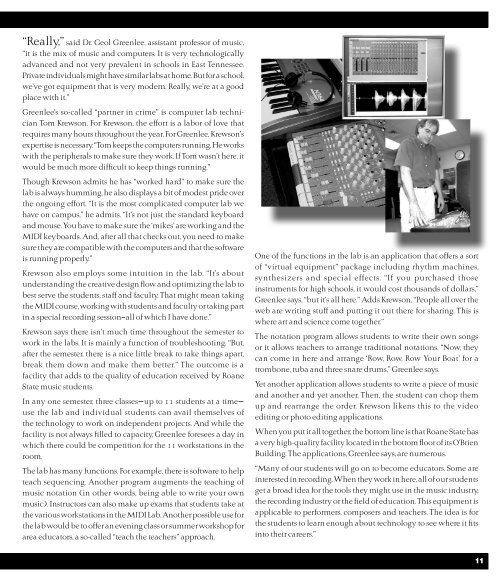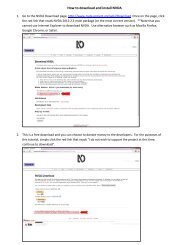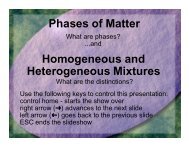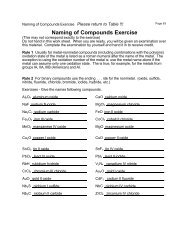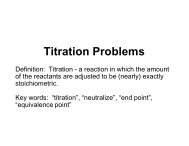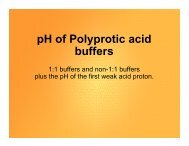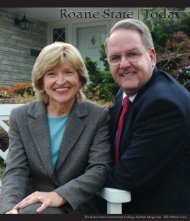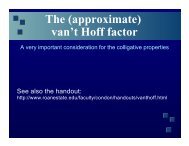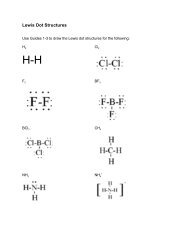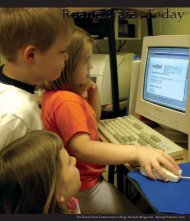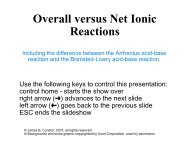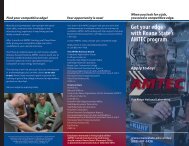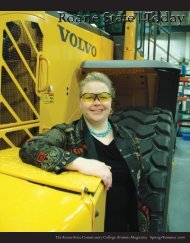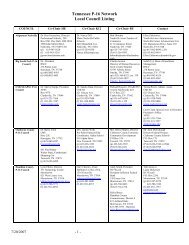2003-2004 Fall/Winter - Roane State Community College
2003-2004 Fall/Winter - Roane State Community College
2003-2004 Fall/Winter - Roane State Community College
Create successful ePaper yourself
Turn your PDF publications into a flip-book with our unique Google optimized e-Paper software.
“Really,” said Dr. Geol Greenlee, assistant professor of music,<br />
“it is the mix of music and computers. It is very technologically<br />
advanced and not very prevalent in schools in East Tennessee.<br />
Private individuals might have similar labs at home. But for a school,<br />
we’ve got equipment that is very modern. Really, we’re at a good<br />
place with it.”<br />
Greenlee’s so-called “partner in crime” is computer lab technician<br />
Tom Krewson. For Krewson, the effort is a labor of love that<br />
requires many hours throughout the year. For Greenlee, Krewson’s<br />
expertise is necessary. “Tom keeps the computers running. He works<br />
with the peripherals to make sure they work. If Tom wasn’t here, it<br />
would be much more difficult to keep things running.”<br />
Though Krewson admits he has “worked hard” to make sure the<br />
lab is always humming, he also displays a bit of modest pride over<br />
the ongoing effort. “It is the most complicated computer lab we<br />
have on campus,” he admits. “It’s not just the standard keyboard<br />
and mouse. You have to make sure the ‘mikes’ are working and the<br />
MIDI keyboards. And, after all that checks out, you need to make<br />
sure they are compatible with the computers and that the software<br />
is running properly.”<br />
Krewson also employs some intuition in the lab. “It’s about<br />
understanding the creative design flow and optimizing the lab to<br />
best serve the students, staff and faculty. That might mean taking<br />
the MIDI course, working with students and faculty or taking part<br />
in a special recording session–all of which I have done.”<br />
Krewson says there isn’t much time throughout the semester to<br />
work in the labs. It is mainly a function of troubleshooting. “But,<br />
after the semester, there is a nice little break to take things apart,<br />
break them down and make them better.” The outcome is a<br />
facility that adds to the quality of education received by <strong>Roane</strong><br />
<strong>State</strong> music students.<br />
In any one semester, three classes—up to 11 students at a time—<br />
use the lab and individual students can avail themselves of<br />
the technology to work on independent projects. And while the<br />
facility is not always filled to capacity, Greenlee foresees a day in<br />
which there could be competition for the 11 workstations in the<br />
room.<br />
The lab has many functions. For example, there is software to help<br />
teach sequencing. Another program augments the teaching of<br />
music notation (in other words, being able to write your own<br />
music). Instructors can also make up exams that students take at<br />
the various workstations in the MIDI Lab. Another possible use for<br />
the lab would be to offer an evening class or summer workshop for<br />
area educators, a so-called “teach the teachers” approach.<br />
One of the functions in the lab is an application that offers a sort<br />
of “virtual equipment” package including rhythm machines,<br />
synthesizers and special effects. “If you purchased those<br />
instruments for high schools, it would cost thousands of dollars,”<br />
Greenlee says, “but it’s all here.” Adds Krewson, “People all over the<br />
web are writing stuff and putting it out there for sharing. This is<br />
where art and science come together.”<br />
The notation program allows students to write their own songs<br />
or it allows teachers to arrange traditional notations. “Now, they<br />
can come in here and arrange ‘Row, Row, Row Your Boat’ for a<br />
trombone, tuba and three snare drums,” Greenlee says.<br />
Yet another application allows students to write a piece of music<br />
and another and yet another. Then, the student can chop them<br />
up and rearrange the order. Krewson likens this to the video<br />
editing or photo editing applications.<br />
When you put it all together, the bottom line is that <strong>Roane</strong> <strong>State</strong> has<br />
a very high-quality facility located in the bottom floor of its O’Brien<br />
Building. The applications, Greenlee says, are numerous.<br />
“Many of our students will go on to become educators. Some are<br />
interested in recording. When they work in here, all of our students<br />
get a broad idea for the tools they might use in the music industry,<br />
the recording industry or the field of education. This equipment is<br />
applicable to performers, composers and teachers. The idea is for<br />
the students to learn enough about technology to see where it fits<br />
into their careers.”<br />
11


